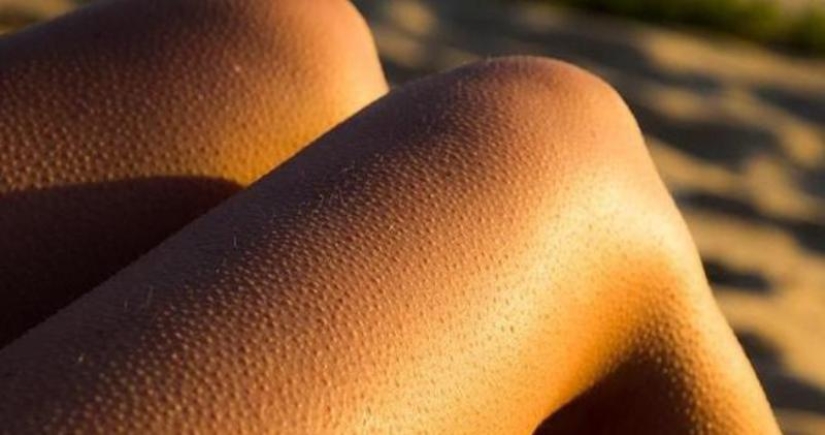Where do goosebumps come from and why do we need them
Categories: Health and Medicine | Science
By Pictolic https://pictolic.com/article/where-do-goosebumps-come-from-and-why-do-we-need-them.htmlSuch a phenomenon as goosebumps is familiar to everyone without exception. It appears from strong emotions, or when we freeze. The skin is instantly covered with pimples, and the hairs on it rise up. This process has a scientific name — pilomotor reflex (PMR), or piloerection. How does it work and why does a person need it?

To begin with, we will make a short excursion into the world of animals. Everyone knows that when a cat is angry or scared, its fur stands on end. This also applies to many other mammals, including our close relatives of monkeys. In the wild, piloerection has two purposes. The first is to instill fear in the opponent. An animal with its fur raised up seems bigger and more dangerous.

The second purpose of PMR is thermoregulation. The raised wool retains heat better, as the volume of air between the hairs increases. It is known that air is a good heat insulator and nature uses it as efficiently as possible.
Evolution rewarded placental animals with the pilomotor reflex millions of years ago. This happened after they separated from their marsupial ancestors. At one time, most mammals had PMR, but over time some lost it. Elephants lack this reflex due to their thick and sedentary skin.

By the way, science has not found out whether the ancestors of mammoth elephants had piloerection. But it is known for sure that in cetaceans and pinnipeds this function disappeared during evolution, since it is not needed in water. Previously, it was believed that PMR in humans is a useless rudimentary function. But the latest research has proven its physiological significance.
The hair rises thanks to a small smooth muscle — arrector pili. One end of it is fixed in the layers of cells of the dermis and epidermis. We cannot consciously control the contraction of this muscle and cause goosebumps at will. This process is regulated by our sympathetic nervous system. When the arrector is shortened, pili pulls the hair up, while it slides out of the bag. This is accompanied by a slight deformation of the skin in the form of a tubercle.

For the skin, this moment is of great importance. Contracting, the muscle compresses the sebaceous gland. At the same time, the contents are squeezed out of it — sebum. This substance gets on the bark and hair, preventing them from drying out. Another function of sebum is to protect the skin from bacteria and fungi. It suppresses their growth and reproduction.
But that's not all. The muscle supports the structure of the hair follicle. Stem cells are located in the tubercle at the place of attachment of the muscle. They are vital for the follicle and hair, as they participate in their renewal. Scientists from the University of Melbourne have found that the separation of arrector pili from the tubercle leads to the formation of adipose tissue. That is, there is no more hair follicle and hair in this place. So a person gradually goes bald. It is well known that goosebumps do not appear on a bald head.
Recent articles

Today, the word "bydlo" sounds like an offensive term for rude and ignorant people. However, it originally had no ...

Skaftafetl is the second largest national park in Iceland. It is located in the south of the country and covers an area of 4,807 ...

As a child, his mother called Sean Vincent Gillis "a baby with an angelic face" and did not even suspect that her child would turn ...